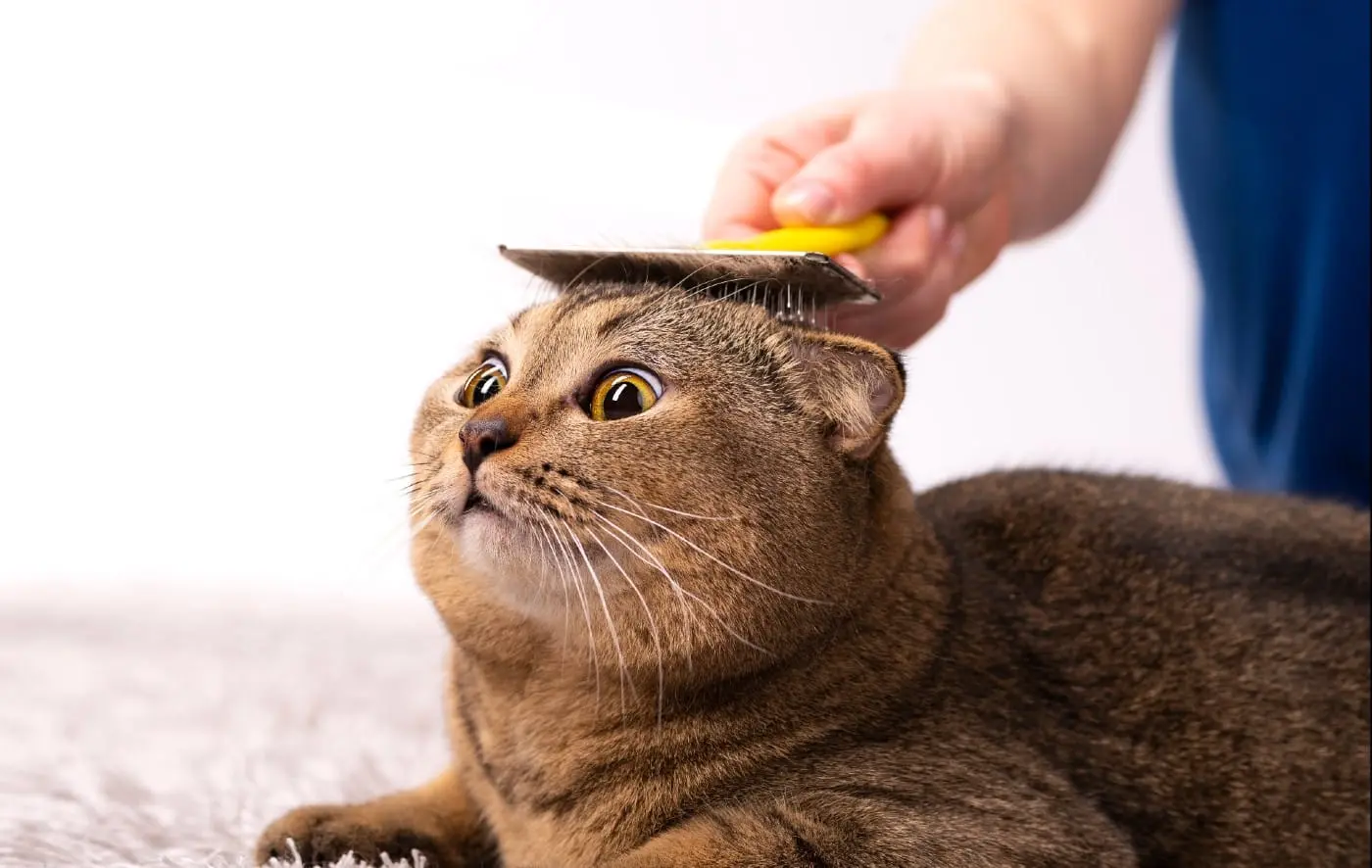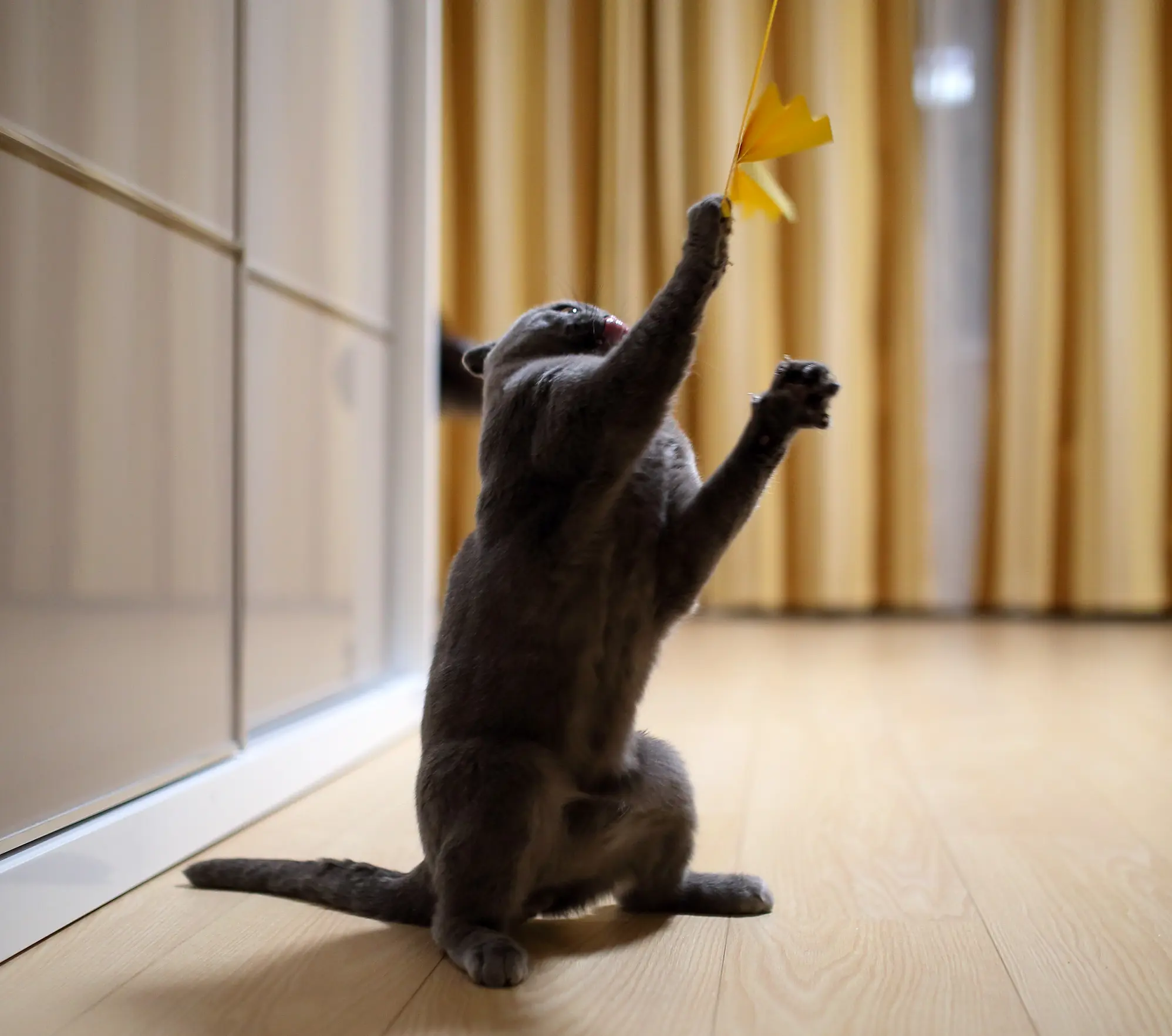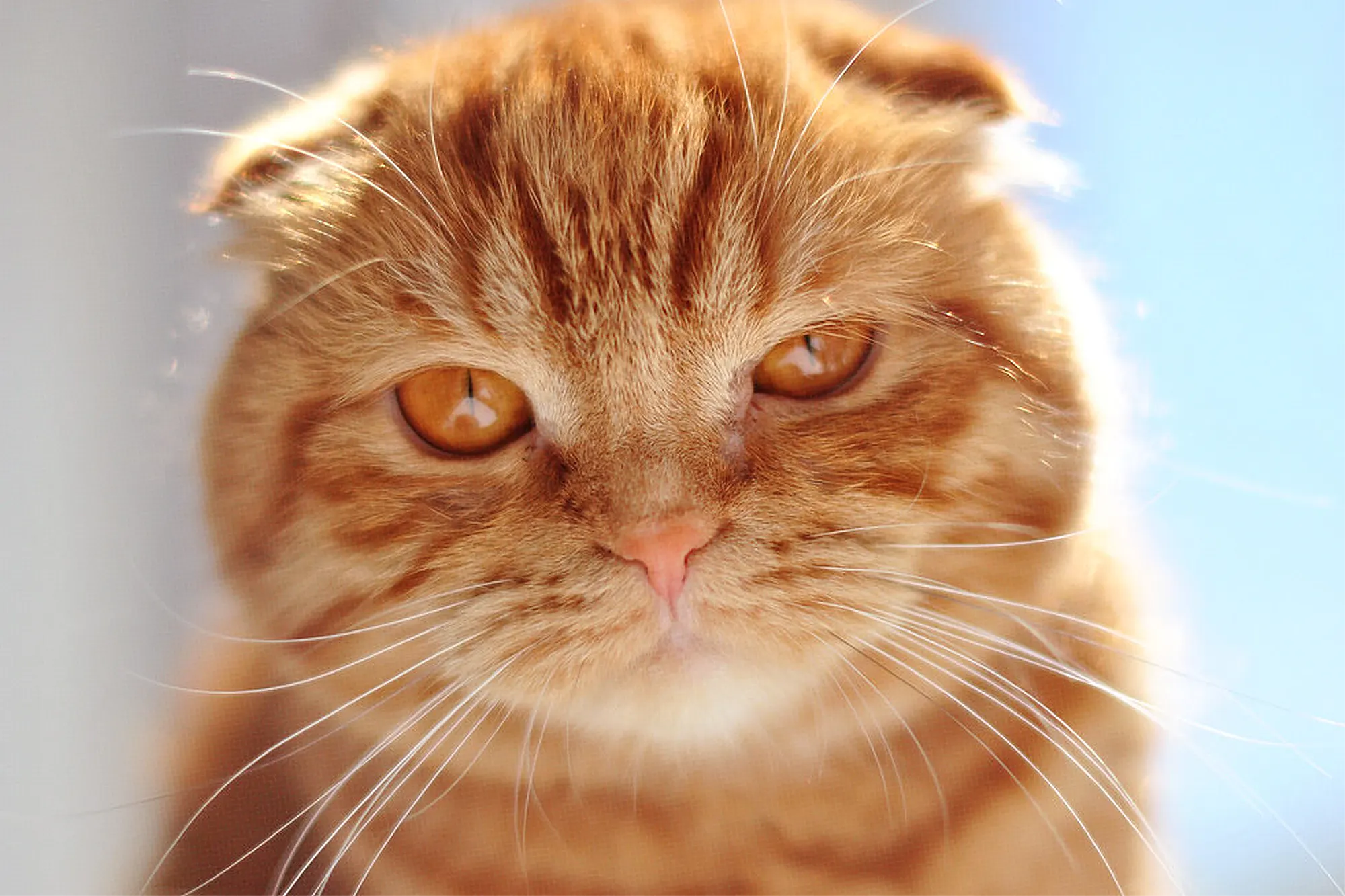Scottish Folds are one of the most popular cat breeds with their distinctive folded ears and calm, loving nature. Scottish Fold cats make wonderful pets for families and those seeking a loyal companion. In this guide, we will explore everything you need to know about these amazing feline friends including their history, temperament, characteristics, and more. So if you’re considering adopting a Scottish Fold, read on to learn what makes these cats so special.
 The Scottish Fold At A Glance
The Scottish Fold At A Glance
Family: Felidae
Class: Mammalia
Lifespan: 11-14 years
Length: 11-13 inches (male and female)
Weight: 9-13 pounds (male and female)
Energy Level: Moderate to low
Personality: Affectionate, loyal, intelligent, gentle, quiet, adaptable, playful
Temperament: Calm and laid-back
Intelligence: A highly intelligent breed, capable of learning tricks and commands
History

The history of the Scottish Fold cats can be traced back to 1961 when a shepherd named William Ross discovered a white barn cat named Susie in a farm near Coupar Angus in Perthshire, Scotland. Susie had an unusual fold in her ears, which made her resemble an owl. It was later discovered that her distinctive folded ears were due to a natural genetic mutation.
Susie was bred with domestic cats and British Shorthair cats, passing on her unique folded ears to her offspring. The breed was recognized by the Cat Fanciers Association in 1978. Scottish Folds are often crossbred with American and British Shorthair cats but do not have the same massive structure.
The Scottish Fold breed is known for its easygoing temperament, sociability, and adaptability. It usually gets along well with cat-friendly dogs and other cats and is a suitable addition to multi-pet households. The characteristic folded ears and the accompanying variations in the degree of folding are due to the dominant gene mutation that affects the cartilage development.
Over time, the breed has developed several coat colors and patterns, thanks to its diverse breeding with other cat breeds. The Scottish Fold cat is truly a unique and charming breed with a captivating history rooted in the picturesque countryside of Scotland.
Cost
The cost of a Scottish Fold is influenced by factors such as breeder reputation, location, age, color, and ear type. Kittens are typically more expensive, ranging anywhere from $1,500 to $3,000, while adults may be priced around $200 to $800 depending on their lineage and health.
Appearance

This unique characteristic is the result of a natural genetic mutation. They are medium-sized cats with a robust and muscular physique, typically weighing between 9 to 13 pounds. In addition to their folded ears, they have large rounded eyes, usually in shades of blue or green, and a short snout. Their coats can be short or long and come in a variety of colors and patterns.
Behavior

They are not overly energetic but are known for their playful nature. They are incredibly sociable creatures, thriving on interaction with human companions and even getting along well with other pet breeds. Scottish Folds are often described as “more like a dog” because of their willingness to play fetch and their ability to learn tricks.
Calm and Placid Nature
Scottish Folds are known for their gentle and laid-back demeanor. They tend to be quieter cats, not easily prone to stress, and make great pets for those who appreciate a relaxed atmosphere. Their calm nature also means they can adapt easily to various environments, whether it’s a bustling family home or a small city apartment.
Social and Affectionate
These cats are exceptionally sociable creatures, often forming deep bonds with their human companions. They’re known to enjoy cuddling, following their owners from room to room, and snuggling in their laps. Their affectionate behavior extends to other pets, making them an excellent addition to a home with multiple animals.
Moderately Playful
While they may not be considered hyperactive, Scottish Folds still enjoy playing and engaging in mental stimulation. They’re quite intelligent, which means they’re often up for a game of fetch or playtime involving puzzles and interactive toys. This breed is also known to be good with children, as they are often gentle and patient with the little ones.
Unique Feline Traits
Aside from their typical feline behavior, Scottish Folds exhibit some uniquely endearing habits. For example, they’re known to sit in odd positions like the “Buddha” pose, where they sit upright with their hind legs stretched out and their paws resting on their belly. They’re also famous for their “owl-like” facial expressions, as their folds combined with their big round eyes make them look adorably curious and wise.
Vocalization and Communication
Scottish Folds are not known for being overly vocal, but they will still communicate their needs and emotions. Their meows tend to be soft and gentle, and they might chatter with their human companions on occasion. By observing their body language and vocalizations, owners can better understand how their Scottish Folds are feeling or what they’re trying to communicate.
Training Abilities
Thanks to their intelligence and affectionate nature, Scottish Folds are known to respond well to training. With patience, consistency, and positive reinforcement, owners can teach their feline friends tricks like playing fetch or even walking on a leash.
In conclusion, the behavior of a Scottish Fold cat has much to offer in terms of companionship, affection, and entertainment. Understanding their behavioral patterns helps in creating a nurturing environment where a healthy bond can be fostered. By recognizing a Scottish Fold’s unique disposition, owners can ensure a harmonious relationship with their furry companions for years to come.
Diet

Feeding a Scottish Fold requires a deep understanding of feline nutritional requirements, as well as their breed-specific needs. Their diet should be rich in proteins, which represents the largest share of a cat’s natural diet. Look for food labels where real meat (like chicken, beef, or fish) is mentioned as the first ingredient.
Essential Nutrients
Just like humans, Scottish Folds require a balanced diet to maintain overall health. This includes:
- Protein: Cats are obligate carnivores, meaning their diet should mostly consist of meat. The amino acids in animal protein are essential for your cat’s health.
- Fats: Fats provide the most concentrated source of energy for cats. They also play a vital role in the absorption of fat-soluble vitamins.
- Carbohydrates: Although cats don’t require carbs, controlled amounts can contribute to their overall health.
- Vitamins and Minerals: These support vital bodily functions and maintain the health of different organs.
Feeding Kittens vs. Adults
Kittens
Scottish Fold kittens require more calories compared to adult cats since they’re growing rapidly. Feed them specially-formulated kitten food which contains a higher protein content to support their development.
Adult Cats
Once your Scottish Fold reaches adulthood, their calorie needs decrease. Transition them gradually to a high-quality adult cat food. Always ensure they have access to plenty of fresh water.
Wet Food vs. Dry Food
Wet food helps keep your cat hydrated and is especially beneficial for Scottish Folds who don’t consume enough water. Additionally, wet food mimics their natural diet and is easier to chew.
Dry food, alternatively, can help keep your Scottish Fold’s teeth clean. It’s also convenient and less messy. Many owners opt for a balanced diet of both dry and wet food.
Health Issues

While Scottish Folds are generally healthy, they are known to be prone to certain health issues. Here are some of them:
Osteochondrodysplasia
One of the key considerations when owning a Scottish Fold is their predisposition to a genetic disorder known as Osteochondrodysplasia. This condition impacts the development of cartilage and bone and can lead to severe arthritis or mobility issues in Scottish Folds. Therefore, regular vet checks are necessary to monitor their health closely.
Polycystic Kidney Disease (PKD)
Scottish Folds are genetically predisposed to PKD, a condition wherein cysts form on the kidneys. This can lead to kidney dysfunction and, in severe cases, failure.
Cardiomyopathy
This condition affects the cat’s heart, making it harder for it to pump blood. Symptoms might be hard to spot, so regular vet visits are essential.
Obesity
Scottish Folds are less active than other breeds, making them susceptible to obesity. This can lead to other health issues, like diabetes and joint problems.
Housing Options
When it comes to housing a Scottish Fold, flexibility is key. They can thrive in multi-level suburban homes as well as high-rise apartments in the city. Due to their sociability, they do well with other pets and family members, making them great for families of all sizes.
However, these cats are indoor dwellers and should have a sheltered environment that protects them from extreme weather, predators, and diseases commonly contracted from the outdoor environment.
Inside the house, Scottish Folds enjoy climbing and need places to perch. Consider purchasing cat condos/trees for them to climb and have fun. They also need interactive toys to keep their minds engaged.
Breeding
Breeding Scottish Folds requires a careful approach due to potential health problems linked with the breed. The gene that causes the distinct ear fold also has the potential to affect cartilage throughout the body, which can result in a painful and debilitating disease called Osteochondrodysplasia, which we earlier covered.
Because of this, reputable breeders never breed two folded-eared cats together. The common practice is to outcross the Scottish Folds with American or British Shorthairs. This strategy promotes genetic diversity and helps maintain the breed’s health.
Grooming/Care

These adorable cats with unique folded ears require special attention to stay healthy and look their best. Let us explore their grooming and care needs:
Routine Grooming
Routine grooming is a critical part of maintaining the health and happiness of your Scottish Fold. Here are the grooming essentials:
Brushing
Scottish Folds have a thick double layer coat which sheds regularly. Brush your cat’s coat once or twice a week to minimize shedding and prevent hairballs.
Nail Clipping
Regularly trim your Scottish Fold’s nails, about every two weeks. Be careful not to cut into the quick, as this can lead to bleeding and pain.
Ear Cleaning
The unique folded ears of Scottish Folds can collect dirt and wax build-up. Regularly clean their ears with a pH-balanced ear cleaner.
Dental Hygiene
Cleaning your cat’s teeth regularly helps prevent gum diseases and bad breath. Use a cat-friendly toothbrush and toothpaste to clean their teeth gently.
Eye Cleaning
Clean off buildup or stains from your cat’s eyes with a soft, damp cloth. Remember to use a new area of the cloth for each eye to prevent spreading potential infections.
Handling
Scottish Folds dislike being carried around frequently. Handle them gently and ensure they’re supported properly when carried to prevent injuries.
Regular Checkups
Regular vet check-ups are crucial to ensure your Scottish Fold cat is in good health. Frequent vet visits can help catch health issues early and prevent them from escalating.
Fun Facts

1. The Origin of the Fold
The first Scottish Fold cat was discovered in 1961 in Scotland, where a shepherd named William Ross found a cat with unique folded ears on a local farm. The cat, named Susie, was the first of her kind, and her offspring led to the development of this unique breed.
2. Genetics Behind the Fold
The characteristic folded ears in Scottish Folds are caused by a genetic mutation. This is a natural, dominant gene mutation that affects the cartilage development, resulting in an unusual folding of the ears.
3. The Range of Ear Fold Styles
Not all Scottish Folds have the same degree of ear fold. There are three main types – single fold, double fold, and triple fold. Each type determines the tightness and degree of the fold, with the triple fold being the most dramatic.
4. A Variety of Coat Colors and Patterns
Scottish Fold cats come in a wide range of coat colors and patterns, from solid colors like black, white, and blue to bi-color, tabby, and tortoiseshell patterns. The diversity of coat colors adds to their charm.
5. The Owl-Like Appearance
Due to their folded ears, round face, and large, expressive eyes, Scottish Fold cats are often compared to owls. Their unique look is undoubtedly a part of their charm and allure.
6. Adaptable Personality
Scottish Fold cats are known for their adaptable and easy-going nature. They can comfortably acclimate to various environments and can live harmoniously with children and other pets. Their friendly and affectionate personalities make them great companions.
7. The “Buddha” Pose
Scottish Fold cats are known for their peculiar sitting positions. One of the most famous is the “Buddha” pose, where they sit on their hind legs with their front paws resting on their belly, resembling a meditating Buddha.
8. The Sitting “Teddy Bear”
Another unique sitting position that Scottish Fold cats are known for is the “teddy bear” pose. In this position, they sit on their hind legs with their front paws hanging down, making them resemble a cuddly stuffed toy.
9. They Can Have Straight Ears, Too
While it’s the folded ears that make Scottish Folds famous, not all of them possess this trait. Some Scottish Folds are born with straight ears due to the genetic variation, but they are still considered part of the breed.
10. An Active and Playful Breed
Though they might appear relaxed, Scottish Fold cats are surprisingly active and playful. They enjoy engaging with their owners and love interactive toys. This breed truly proves to be the perfect blend of calm, affectionate, and active.
Conclusion
Scottish Folds, with their unique features and charming disposition, make delightful pets for the responsible owner. Understanding the breed – from their unique history to their special needs – is key to providing the best care for these charming cats. As with any pet, bringing a Scottish Fold into your home should be a long-term commitment made out of love and passion for the breed.
